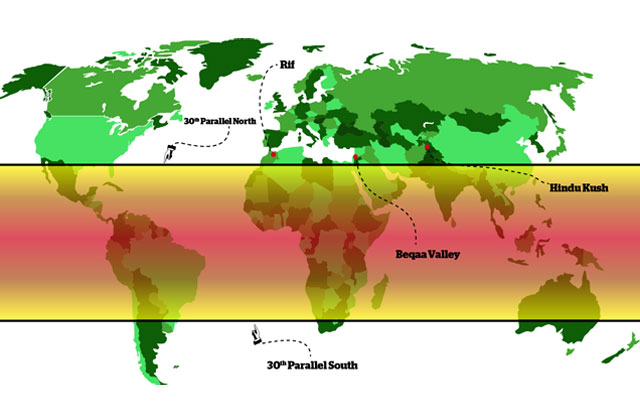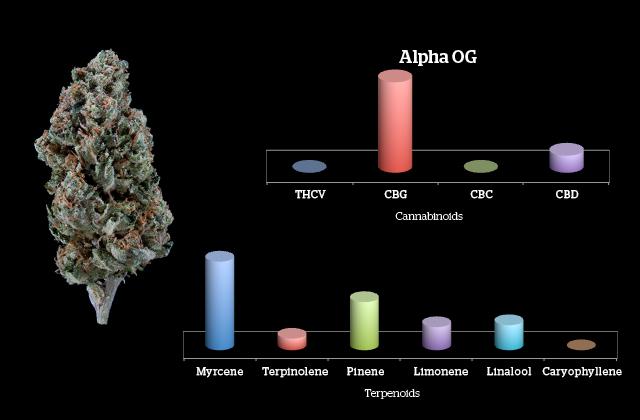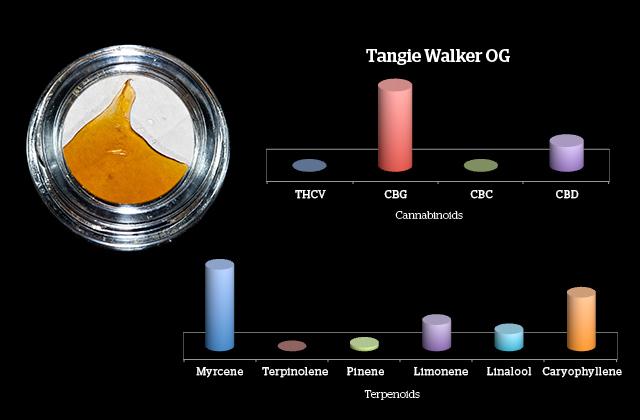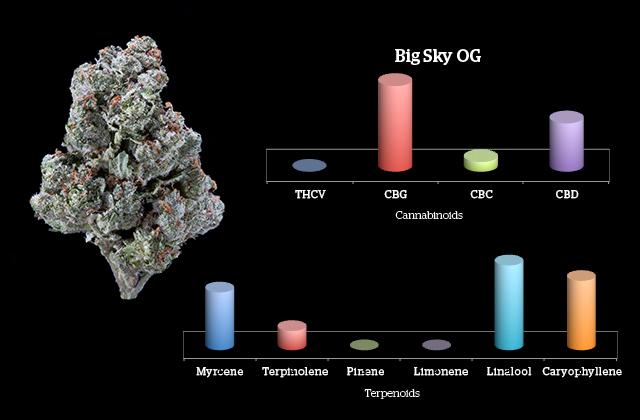Big across the California scene, especially in the Southern region, this powerful class of hybrid strains has dominated the Indica scene since OG Kush’s rise in popularity in the late 90’s. Take a good strain, cross it with OG Kush, stabilize the genetics and voila, you have an OG. But what do all these strains have in common? What makes an OG an OG?
Almost all the strain profiles of OG’s listed here are fairly rich in diverse terpenes, more so than many other strain families. Pay attention to the terpene profiles and you’ll start to see some patterns; perhaps the combination of linalool, caryophyllene, limonene and myrcene gives these OG’s their characteristic fuel-like, yet floral aroma.
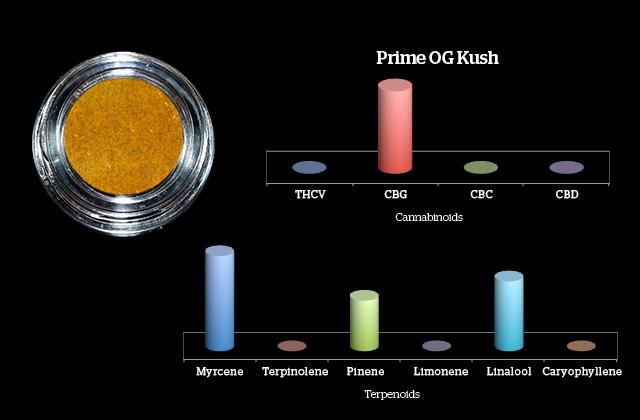
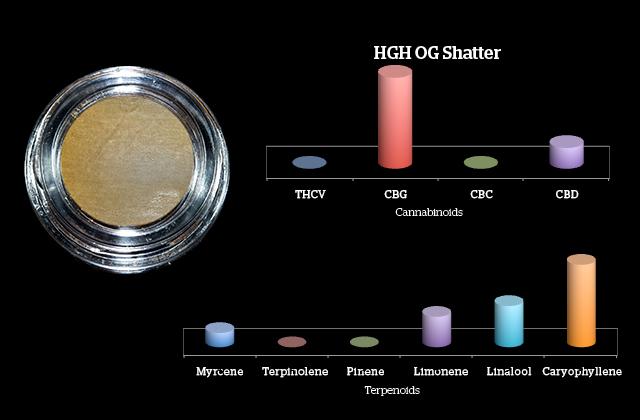
A wiff from a sample bottle of pure linalool makes us think this terpene certainly could be the culprit for the dense fuel aroma. Paired with the delicate, floral of myrcene, and sometimes terpinolene too, the smell of these strains resonates with almost anyone in the world as the aroma of simply great pot.
Rich in flavor and generally high in THC, these strains are knockouts on several levels. Don’t get mislead by their Kush heritage, these strains are hybrids true and true, and their terpene profiles wholeheartedly agree as well. It’s the mix of indica terpenes (linalool, caryophyllene, limonene, pinene) with sativa terpenes (terpinolene and myrcene) that makes these strains so full-flavored.
Also worth noting is the near across-the-board presence of trace amounts of CBD. This is solid evidence of their Hindu Kush origins. Cannabis that produces solely THC, with not even trace amounts of CBD, is native to sunny regions between the 30th parallel North and the 30th parallel South. Strong sativas like Durban Poison, Nigerian, Thai Stick, Acapulco Gold and Colombian all come from this area of the world, while indicas are native to the region directly about the 30th parallel North: the Hindu Kush and the Rif and Beqaa Valleys. Strains from these high-altitude regions still receive the UV light necessary to produce high levels of THC, but will contain some CBD. Head too far north and landrace cannabis stops producing THC, and produces CBD instead.
Source: HighTime.com
Writer: Sirius J

